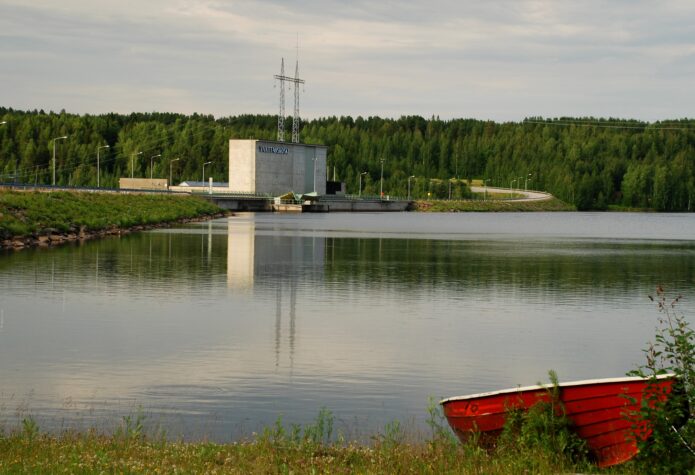Kemijoki hydropower revamped for climate action

Kemijoki’s hydropower plant at Vanttauskoski in Lapland.
Finland recently announced its ambitions to become carbon-neutral by 2050. This is in line with the climate targets set out in the Paris Agreement. In order to achieve this goal, hydropower will have to keep on playing a role in the sustainable energy mix, says Mr. Jani Ollila, CFO of Kemijoki Oy.
Along Finland’s longest river, the Kemijoki, sixteen hydropower stations produce enough electricity for up to 770,000 households. Operated by the majority state-owned company Kemijoki Oy, the plants generate about a third of the country’s electricity from hydropower.
Hydropower is the second most widely exploited sustainable energy source in Finland, and part of the reason why the country was among the first to reach and exceed the EU 2020 renewables targets.
In an interview with NIB Newsletter, Jani Ollila, CFO of Kemijoki Oy, discusses the role of hydropower in Finland’s new climate and energy plan for the coming decades.
“Climate action is to a large extent focused on electricity production, as it’s where the bulk of decarbonisation happens”, says Mr Ollila. “Finland’s energy policy aims for the advancement of biomass, wind and solar energy, but hydropower will be just as consequential.”
Increasing the output
Hydropower is seen as one of the most efficient ways of generating renewable energy, as it is reliable, cost efficient and free from carbon dioxide emissions. However, hydropower has its downsides and limitations.
“The Finnish rivers that are harnessed for hydropower production have almost reached their maximum potential, and other water bodies are protected. Also, all existing major hydropower plants in Finland have effectively been refurbished to their max as well”, Mr Ollila explains.
Renovating hydropower stations is a long-term investment. Kemijoki started its modernisation programme back in 1996. It was completed by 2014, but other upgrades will stretch into 2019. The programme is co-financed with two loans from NIB; a EUR 25 million loan signed in 2009, and a EUR 20 million loan signed in 2013.
“The average life cycle of a hydropower plant is between 40 and 50 years”, Mr. Ollila says. “Then, investments in new equipment and technology become necessary to start a new cycle.”

“Over the past years, we have made targeted upgrades to our plants. By overhauling a large number of turbines and replacing transformers and generators, we have managed to increase the efficiency and sustainability of our operations.”
Jani Ollila
CFO of Kemijoki Oy
The protection of shorelines and migratory fish as well as ensuring dam safety and water flow rates were crucial during the renovations.
“In addition, the electrical and automation systems were replaced in all of our refurbished plants, and more environmentally friendly impellers were installed that no longer require oil for lubrication, only water. These major upgrades have raised the power output by a total of 235 MW and the energy output by 240 GWh per year. The increase in power is twenty-five per cent.”
Balancing the mix
One challenge of being completely fossil fuel-free is the need to balance the production of electricity with its consumption, which can fluctuate significantly during the day, and is susceptible to weather and seasonal conditions.
“The main advantage of hydropower is that water can be stored in reservoirs, which allows for rapid response to fluctuations in consumption”, explains Mr Ollila.
”For instance, electricity usage increases in the mornings, when activities begin in homes and machinery starts up in factories. During the night and at weekends, consumption is naturally lower.”
“The need for load-following power also depends on fluctuations in production from other sources. This is especially relevant with regard to the increase in wind power that is planned for the coming years, which cannot be regulated, and will further increase the need for rapid control of power output.”
Hydropower will continue to play a role in meeting Finland’s ambitious climate and energy targets, even if the current national energy and climate strategy does not assess the share of hydropower to increase significantly in the future.
“We have now started detailed planning for a last hydropower plant at the Kemijoki River – Sierilä. With a power output of 44 MW and an energy output of 155 GWh, the plant will be a significant installation for the Finnish energy system.”
“Our intention is to make Sierilä an example of modern and responsible hydropower, as we will need it for balancing the energy mix”, Mr Ollila concludes.
